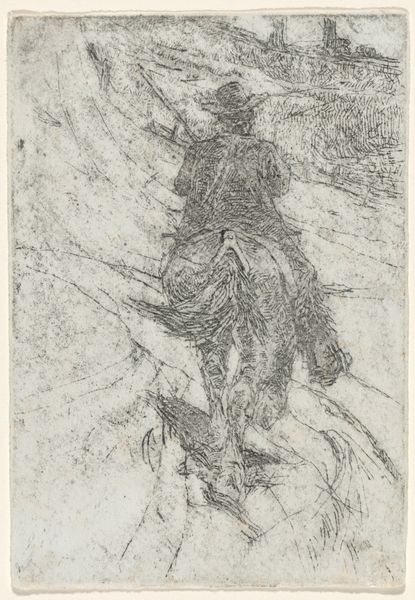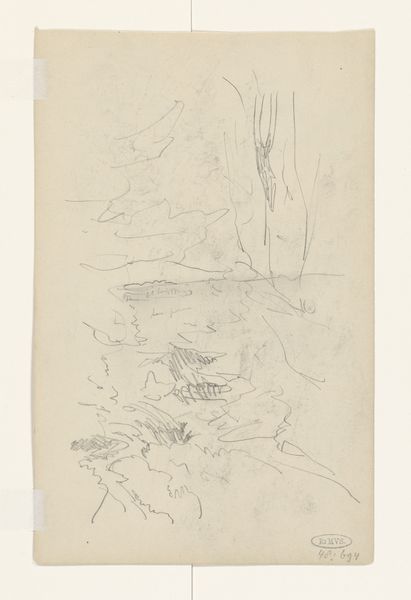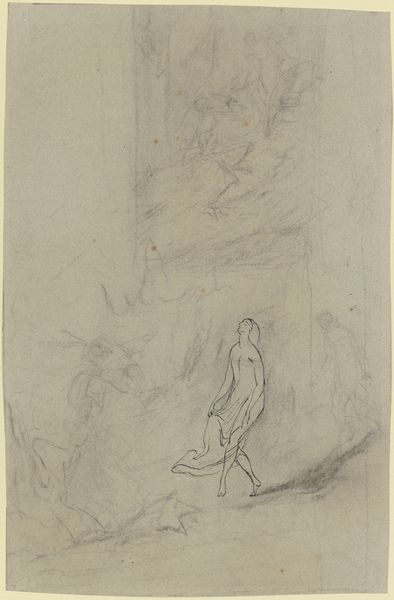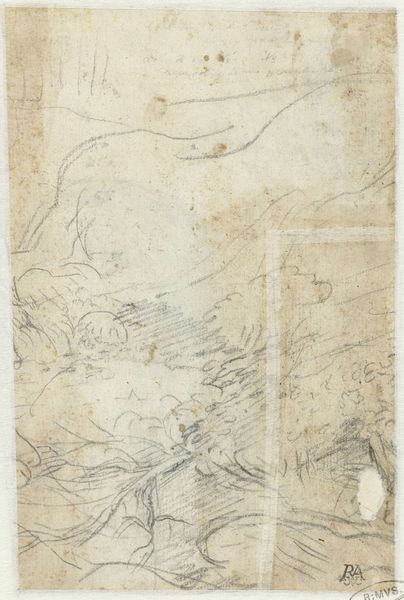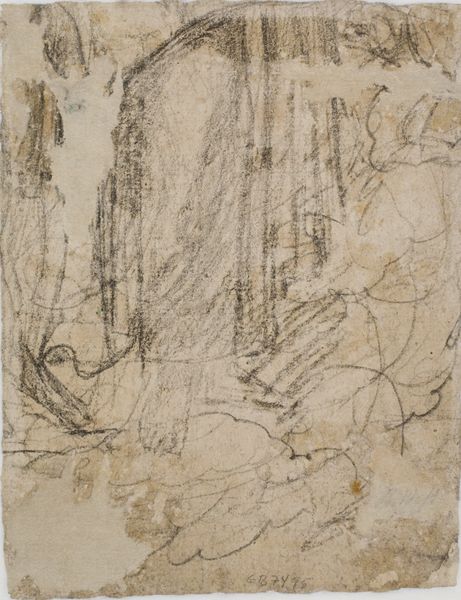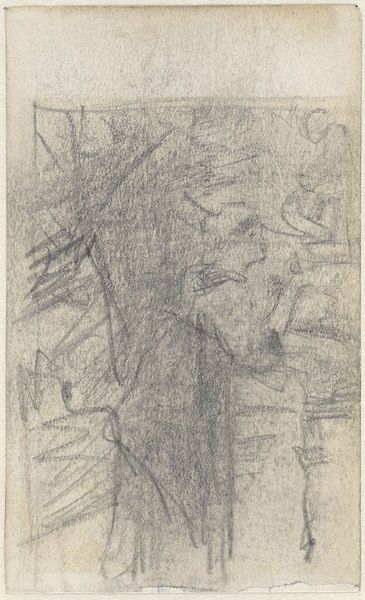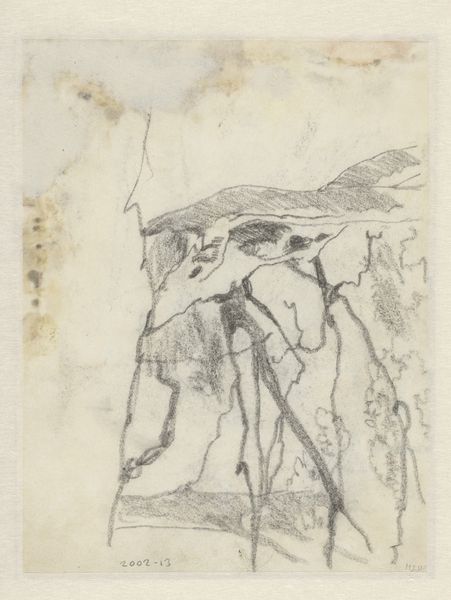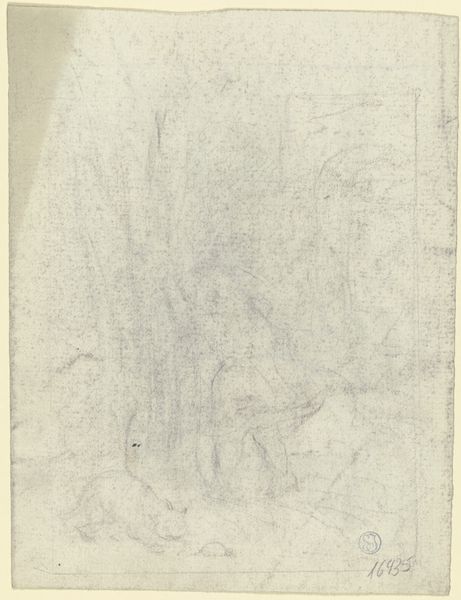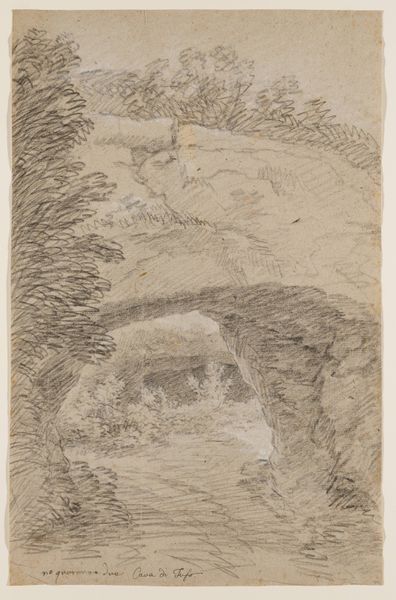
drawing, print, paper, pencil, graphite
#
drawing
# print
#
pencil sketch
#
landscape
#
paper
#
form
#
romanticism
#
pencil
#
line
#
graphite
#
realism
Dimensions: 147 × 114 mm
Copyright: Public Domain
Curator: This sketch, "Mountain Gorge," is by John Sell Cotman. Its exact date isn't known, but it offers a fascinating glimpse into his working process. Editor: My first impression is one of austerity. The stark graphite on paper creates a raw, almost barren landscape. The rapid strokes seem to suggest a fleeting moment captured, perhaps the artist battling against the elements. Curator: Cotman was part of a generation of artists who were deeply interested in the picturesque and the sublime. Think about how these ideas were playing out in wider society; landscape was not just scenery, it was bound to notions of national identity and Romantic sensibilities. Editor: It’s interesting you mention national identity because what strikes me here is how the roughness of the material and the starkness of the rendering push against idealised notions of landscape. Look at how the pencil scratches and the visible texture of the paper are an intrinsic part of the image; the paper itself is an active element. This feels deliberately unpolished, almost brutal in its honesty. Curator: I agree. Cotman's focus here really deviates from the idealised pastoral scenes popular at the time. What is so special, too, is his handling of form. Rather than opting for grand panoramic vistas, he forces you to concentrate on the monumental geological forms that define the mountain gorge. His commitment to Realism through mark making shows off his dedication to his craft as well. Editor: Absolutely. We see him wrestling with the material world, pushing graphite into paper, almost carving the landscape out. There's labor evident in every line. It reminds us of the physical exertion and human cost in landscape production during the late 18th century when industrial interventions transformed pastoral idylls into scenes of extraction and utility. Curator: And I find myself pondering how this relates to today's engagement with landscape – the weight it carries as environmental discourse shapes and forms how we visualize land in all its complexities. Editor: For me, returning to the materials grounds these high level ideas. You have to consider how that direct engagement, the labor in creating a relatively raw rendering, still resonates. It's a physical record, an index of the interaction between artist and the land as it was envisioned and made.
Comments
No comments
Be the first to comment and join the conversation on the ultimate creative platform.

